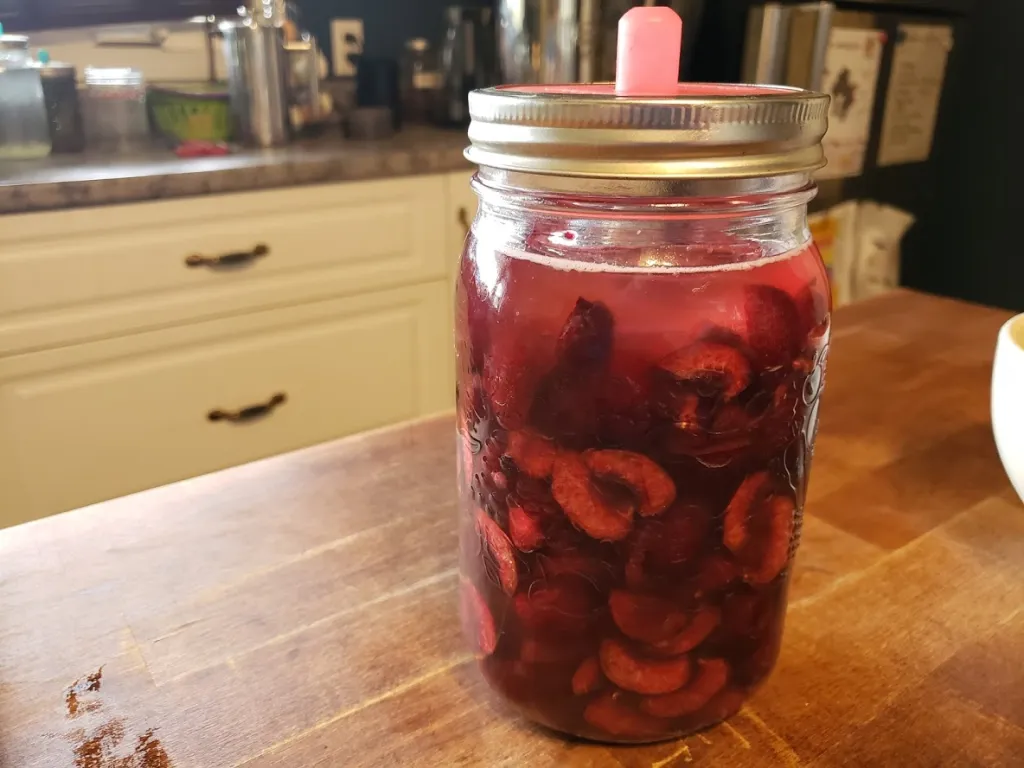
How to Lacto-Ferment Berries
As many of you know I’ve been on a fermentation kick lately. I am loving this method of preserving our harvest, especially since it adds such a wide range of health benefits to our already healthy home-grown chemical free food.
What Exactly is Fermentation?
A food is fermented when it undergoes a process known as lacto-fermentation; lactic acid is created when natural bacteria consumes the starch and sugar in food. This process creates loads of probiotics, beneficial enzymes to aid in digestion, b vitamins and Omega-3 fatty acids. In addition this will also preserve whatever you are making.
Fermented foods are delicious, versatile and have been shown to increase overall health:
probiotics: this introduces beneficial bacteria to your digestive system resulting in a healthy balance of gut flora
nutrient absorption: in order to properly digest and absorb your food you need healthy levels of probitocs and digestive enzymes, both of which can be accomplished eating fermented foods
Also if you also enjoy apple butter, be sure to check out my slow cooker apple butter recipe here.
A Note About Water
It’s really important that you don’t use tap water when making ferments because of the chlorine (and sometimes fluoride) content. Both of these substances will interfere with or sometimes prevent the fermentation process all together. If you have a high quality water filtration system, like a Berkey, that can filter out both of those substances than your tap water will be just fine to use.

What’s Different About Fermenting Fruit?
Normally ferments contain two ingredients in their brine – spring water and a good quality salt. Vegetable ferments like ginger carrots or saurerkraut, are wild-ferments, meaning that they rely on the bacteria in and around us to create the tasty cultured product we aim to make. In the case of fruit, we need to tweak our process just a little bit. Because fruit naturally contains a lot of yeast (usually in the skins), we need to be careful that we aren’t creating an alcohol instead of a lacto-fermented end product.
So while most vegetable ferments do not require a starter culture of any kind, in the case of fruit we will be needing one. This helps to kick-start the fermentation process so you are producing an actual cultured product and not booze. Another addition to this recipe is a tiny amount of a sweetener (in this case honey), which will also help to kick-start your ferment.
In our case because I am making homemade yogurt, I opted to use whey. You can also use kombucha or water kefir.
What Kind of Fruit Can I Use?
In this recipe we used cherries but you can use almost any fruit including blueberries, raspberries, currants, service berries etc. The only fruit that apparently does not ferment well, according to the well-known book Nourishing Traditions, are strawberries. Personally I have not tried them, but I did find recipes for fermented strawberries online. If anyone has tried it with success please comment below.
Fermentation Kits/Weights

Fancy fermentation weights and lids are not necessary when it comes to making home ferments, however now that I am doing larger batches of these healthy foods, I am so very glad that I have my set from Mason Tops. I started with the Pickle Pipesand quickly upgraded to their whole set(which includes the Pickle Pipes, Pebbles and the Pickle Packer) because I loved the product so much. They make them for both wide mouth mason jars and for regular mason jars.
I hope you enjoy these as much as we have been. They have made a delicious addition to our homemade Greek yogurt. Try eating them on their own, in smoothies, in homemade desserts or as a part of a healthy breakfast.
Happy Fermenting!
P.S. Please pin for future reference and to share in the fermentation love 📷








